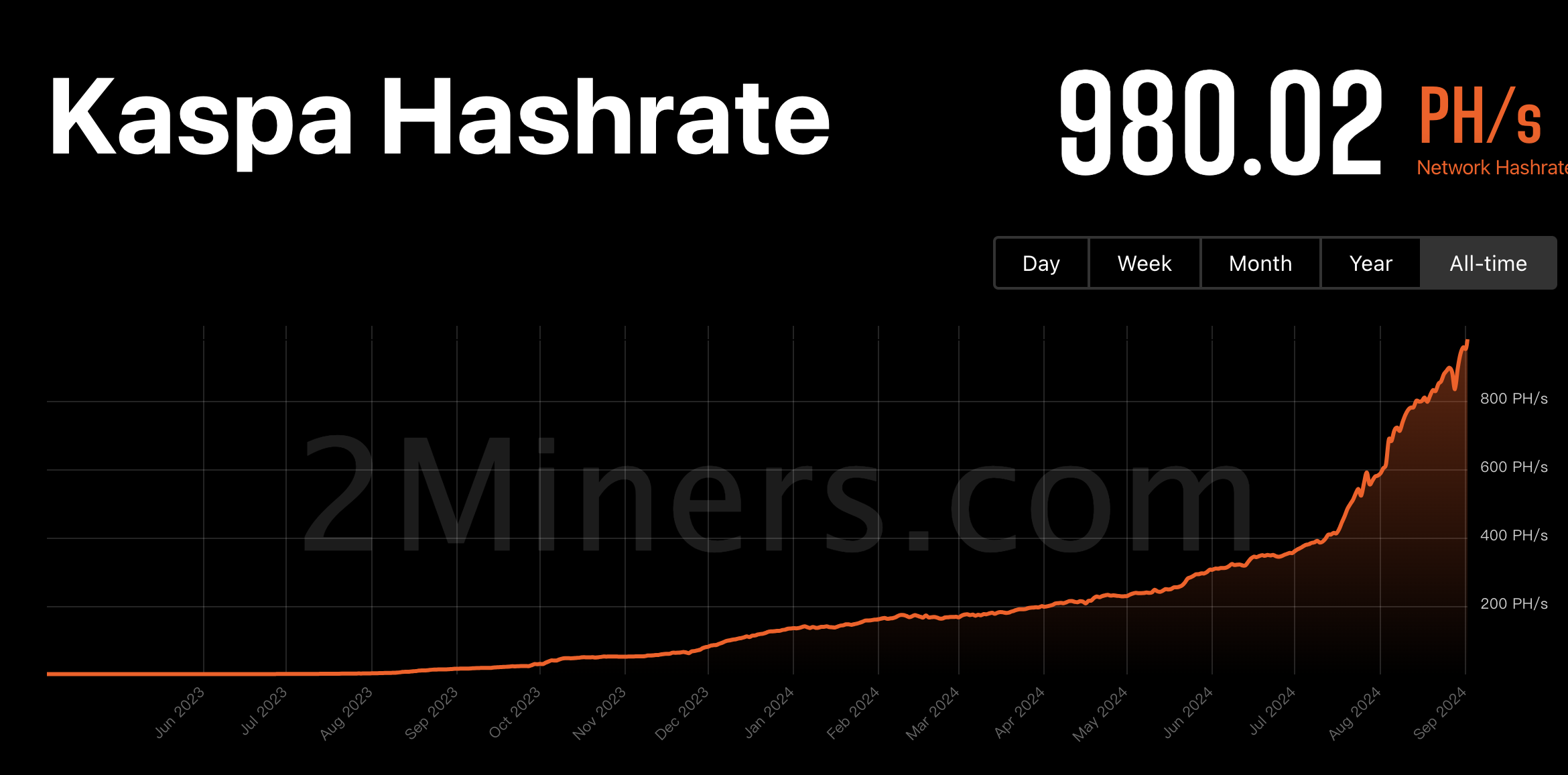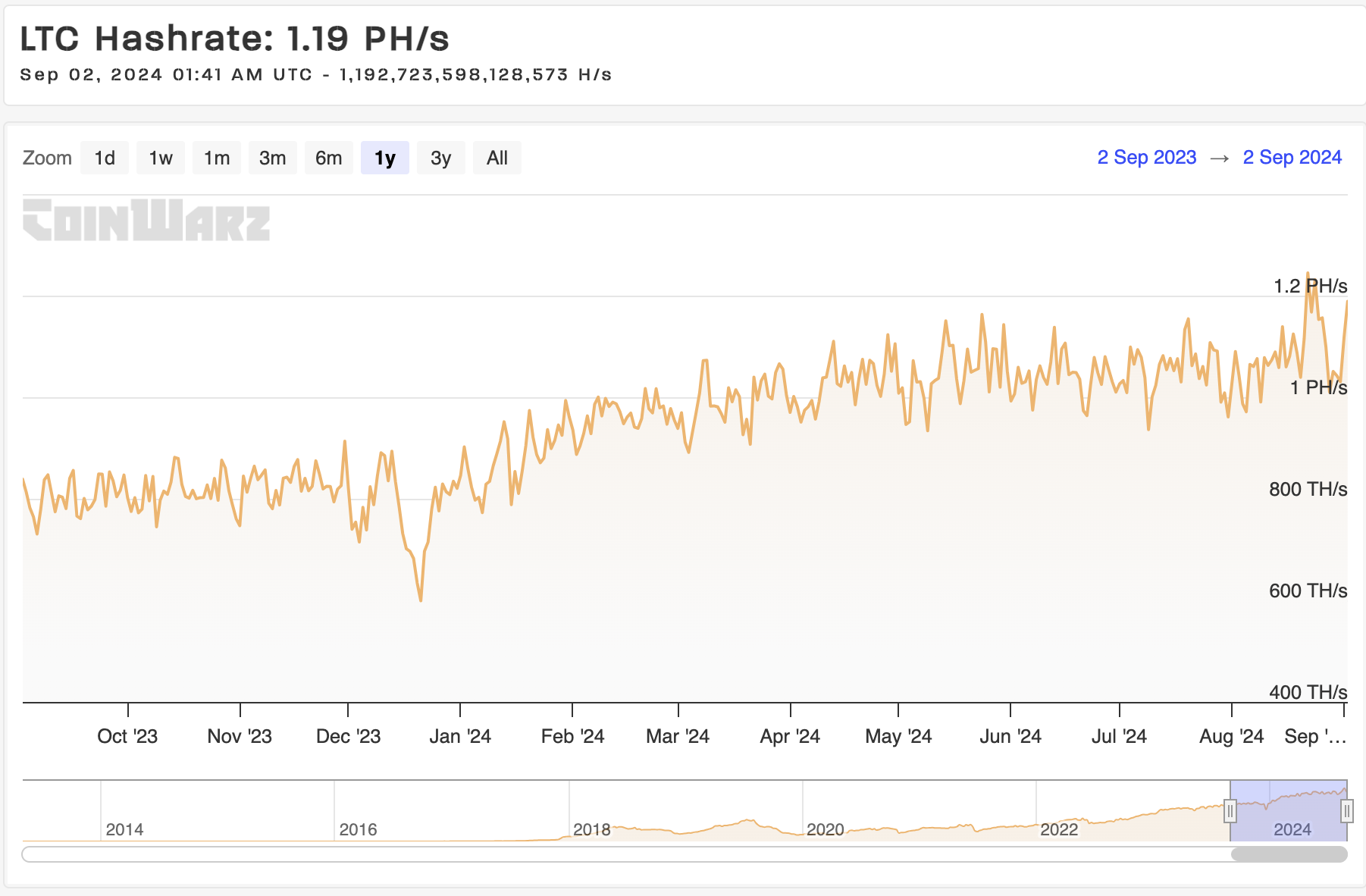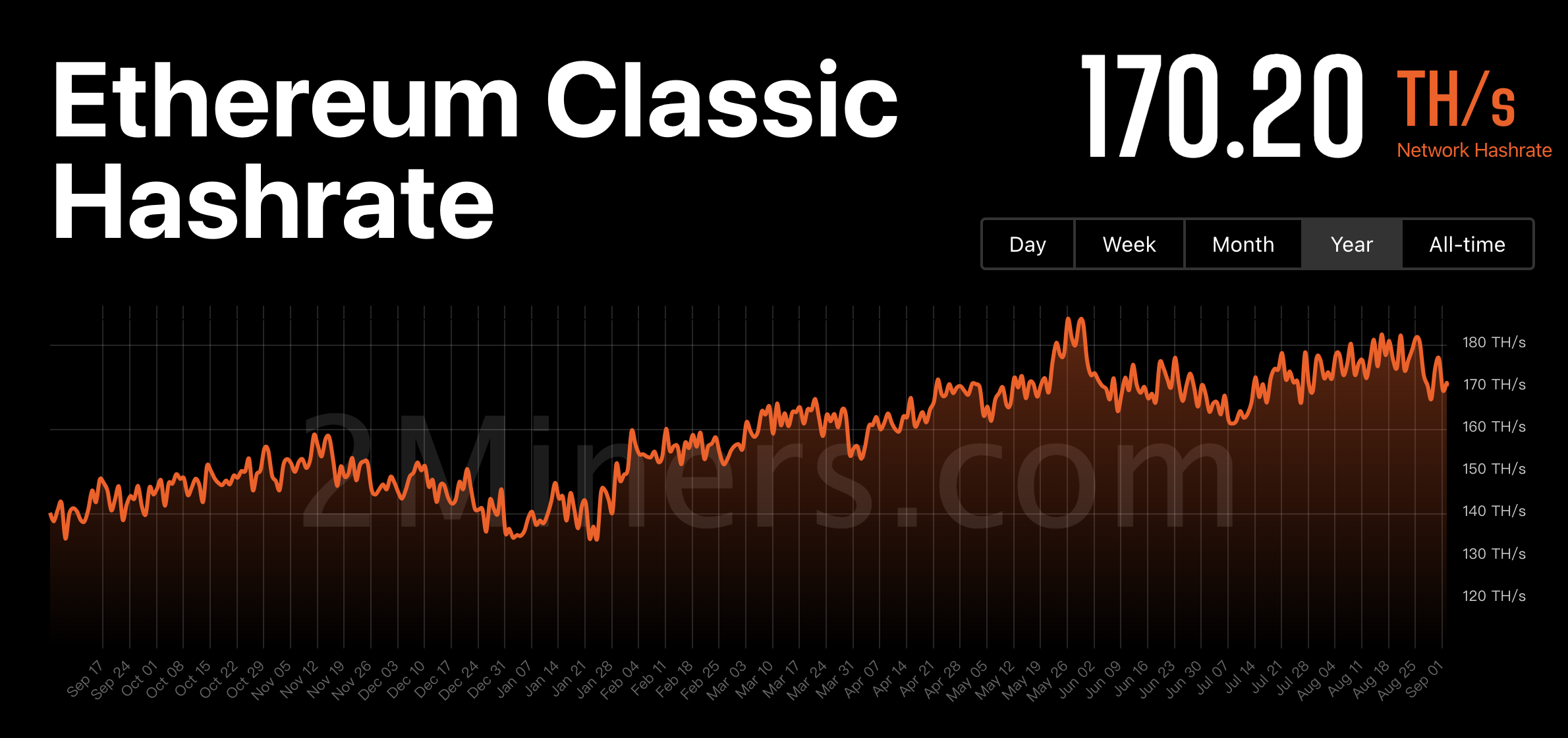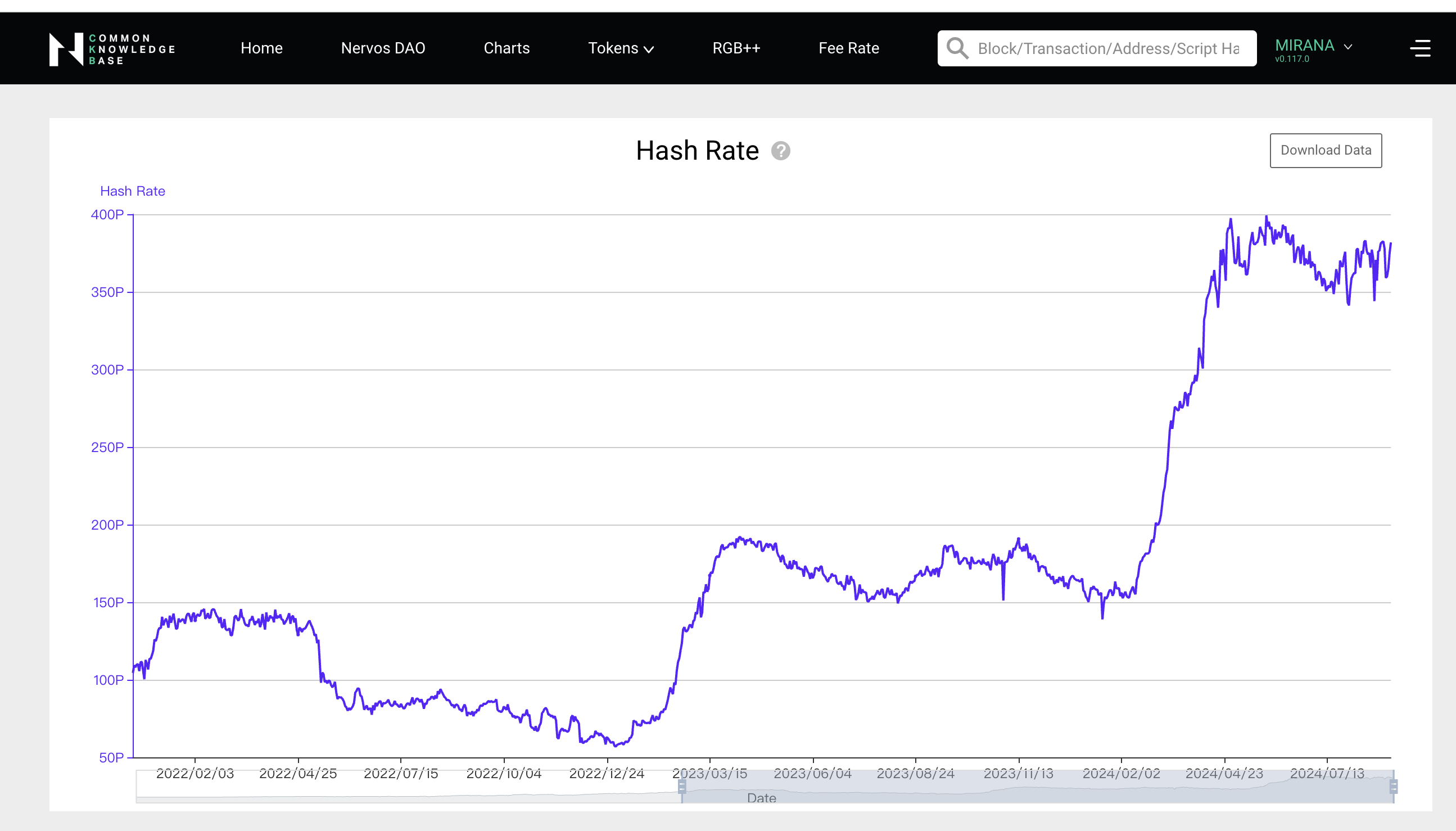In 2024, spurred by major U.S. presidential candidate Donald Trump, cryptocurrencies have entered the political arena, becoming a key issue in election discussions for the first time. Mining, a major method for acquiring cryptocurrencies, has now become a part of national strategies. Some countries have enacted legislation to legalize crypto mining, attracting global miners to boost local economies.
This national support has prompted miners to engage more actively in the crypto mining sector. So, which coins are miners focusing on now, and which are the most popular? This article reviews the hashrate trends of leading PoW coins from early 2024 to the present, offering valuable insights for miners.

Bitcoin (BTC)
Bitcoin, as the earliest and most well-known cryptocurrency, remains the top choice for miners worldwide. Despite the increasing mining difficulty, Bitcoin's enormous market value and wide recognition maintain its strong appeal.
This year, Bitcoin's network hashrate has experienced a fluctuating upward trend, reaching a record high of 879.51 EH/s on July 23 at block height 853,498. The hashrate increased by 58% from 556 EH/s at the beginning of the year. As of September 2, BTC.com reports an average network hashrate of 634.02 EH/s over the past week.

With each ANTMINER S21 XP having a rated hashrate of 270 TH/s, the current Bitcoin network is equivalent to 2,348,222 of these machines operating simultaneously, highlighting the fierce competition in mining.
Despite the fourth halving reducing block rewards from 6.25 BTC to 3.125 BTC, which some predicted would decrease the network hashrate by 10%, the actual hashrate has not dropped significantly. Although some less profitable miners have left the market, new mining rigs are continually being deployed. Reports indicate that North American mining companies are aggressively acquiring the latest ASIC mining rigs to offset the reduced production capacity post-halving.
Bitcoin mining remains a highly consensus-driven industry, but the steep cost of mining rigs, often over a thousand dollars, is discouraging for many ordinary investors. With increasing institutional involvement and a growing hashrate, it will become even harder for average individuals to participate.
Kaspa (KAS)
Kaspa, a next-generation project utilizing BlockDAG architecture, is considered a leading candidate for the next generation of Layer 1 solutions following Bitcoin. Launched in 2021, the rapid appreciation of its token, KAS, has driven significant mining demand. Major manufacturers like BITMAIN and ICERIVER quickly developed ASIC mining rigs for Kaspa, leading to a swift increase in the network's hashrate.
According to 2Miners, Kaspa’s network hashrate has skyrocketed to 980.02 PH/s, marking a 626% increase since the start of the year. As more miners join the network, competition has become intense, making GPU mining unprofitable and pushing it out of the market. Currently, ASIC mining rigs are the preferred choice. With the ICERIVER KS5M boasting a hashrate of 15 TH/s, the Kaspa network now represents the combined output of 65,333 such machines.

Unlike Bitcoin's four-year halving schedule, Kaspa's rewards decrease monthly by (1/2)^(1/12). Since early 2024, Kaspa has undergone eight reductions, with the next one set for September 5, lowering the block reward to 87.31 KAS. This steady reduction in rewards helps lower sell pressure and decrease market supply, which supports a rising price trend for KAS.
Litecoin (LTC)
Litecoin is the second oldest cryptocurrency after Bitcoin. In August 2023, Litecoin underwent its third halving, but the price of LTC did not rise significantly and fell short of expectations. Currently, Litecoin miners' earnings mainly depend on merged mining income. Notably, the Bellscoin project, which had been "dormant" for over a decade, has been revived and officially activated merged mining at block height 144,000, providing additional revenue for Litecoin miners (mining LTC yields $LTC, $DOGE, and $BELLS).

In the mining market, the latest generation of Scrypt algorithm mining rigs, such as the ANTMINER L9 and Elphapex DG1+, have recently increased Litecoin's network hashrate, but the growth has been limited. The highest historical hashrate occurred on March 6 of this year, reaching 1.75 PH/s at block height 2,644,992.
Ethereum Classic (ETC)
Ethereum Classic, which emerged from the Ethereum (ETH) hard fork in July 2016, initially shared Ethereum's algorithm and PoW mechanism. However, following Ethereum's shift from PoW to PoS in September 2022, much of the mining hashrate from Ethereum moved to Ethereum Classic.

This year, both ETC's price and hashrate have remained relatively stable. The release of the BOMBAX EZ100 series mining rigs has boosted ETC's hashrate by 26.87% since the start of the year, reaching 170.2 TH/s. Today, ASIC mining rigs dominate the mining landscape, with GPU mining largely phased out due to low profitability.
Nervos Network (CKB)
Nervos Network, launched in 2019, is a PoW+UTXO compatible public blockchain. In February of this year, the network introduced the RGB++ protocol, positioning itself as a Layer 2 solution for Bitcoin. Like Bitcoin, Nervos Network uses a PoW mechanism, with miners playing a crucial role in maintaining network security and proper operation.
Unlike Bitcoin, Nervos Network's native token CKB (CKByte) features a distinct economic model with both primary and secondary issuance. The primary issuance is capped, with a fixed number of CKB awarded to miners per block, halving every four years until the total supply is fully distributed.
The secondary issuance, however, has no cap and follows a fixed annual issuance of 1.344 billion CKB. This mechanism ensures that even after the primary issuance of CKB is fully mined, miners will continue to receive rewards for securing the network, unaffected by on-chain transaction volume.

This year, Nervos Network has experienced remarkable growth in network hashrate, currently reaching 381 PH/s, which is a 134% increase from 163 PH/s at the beginning of the year. The predominant mining method now is using ASIC mining rigs. According to profitability calculators, with an electricity cost of $0.05 per kW·h, only the ANTMINER K7 miner can still maintain a daily net profit of $3.40.
Conclusion
Hashrate is a unit of measurement for the number of hash operations that can be performed per second, and it is also a key indicator for measuring network security and determining the mining difficulty for miners to earn block rewards. The higher the hashrate, the more computational resources are devoted to verifying and recording transactions. Additionally, a high network hashrate is commonly interpreted as a demonstration of faith in the PoW project's future, indicative of miners' belief in its enduring value.
According to hashrate trends and updates from mining equipment manufacturers, Bitcoin remains the top choice for mining, followed by Kaspa. Although Litecoin, Nervos Network, and Ethereum Classic still attract new miners, their popularity is slightly lower. This lower interest, combined with reduced involvement from large institutions, offers individual investors a unique opportunity with fewer barriers to entry.